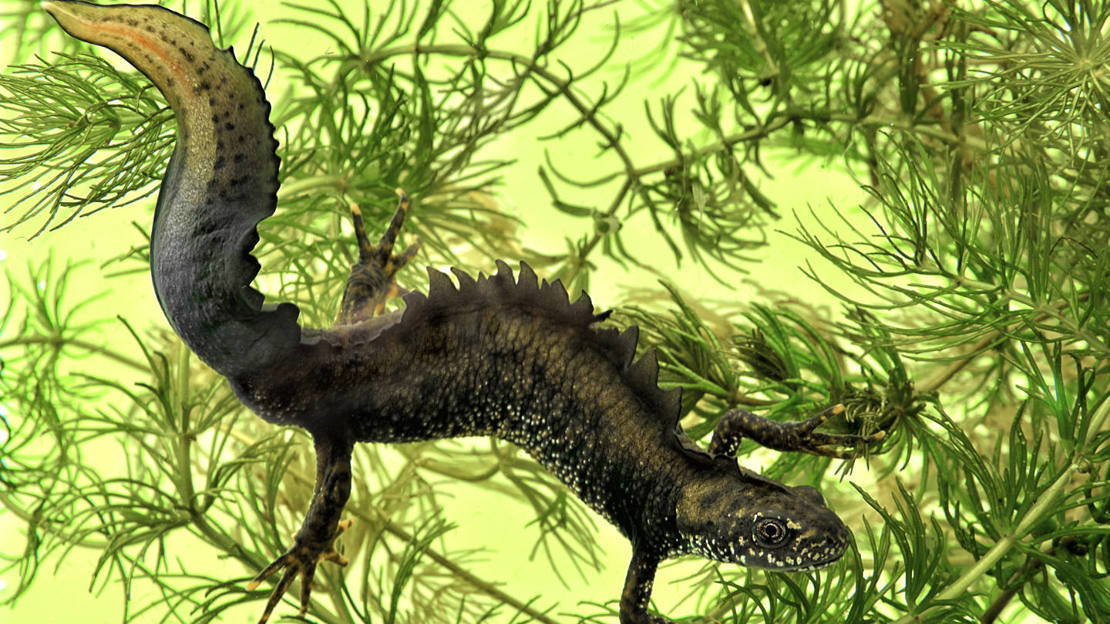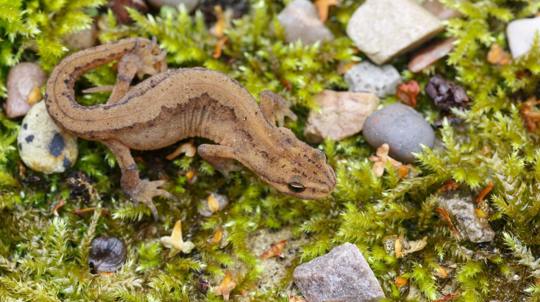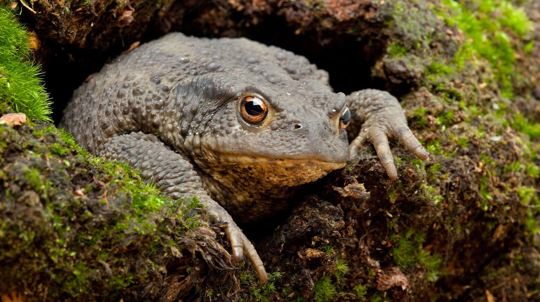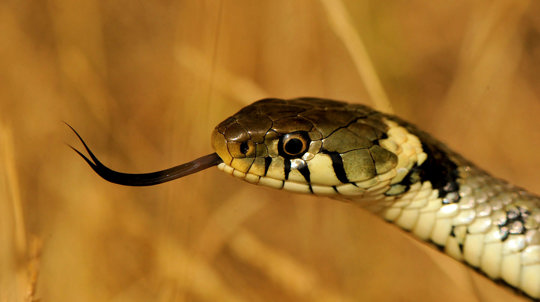Unlike frog and toad tadpoles, newt larvae develop their front legs first, then their back legs. Once they have absorbed their gills and left the water, they are known as 'efts'.
British newts: an identification guide

Content manager
The UK has three native species of newt. They can be tricky to spot and harder still to tell apart, but with a little detective work it's possible to narrow them down.
Smooth newt (Lissotriton vulgaris)
Appearance
Both males and females are brown in colour with spotty, orange bellies. These black spots extend up the throat. During the breeding season, males have a wavy crest along their backs. Adults can reach up to 10cm long from nose to tail.
Newt larvae develop their front legs first and have feathery external gills behind their heads.
Where to find them
Also known as the common newt, this species lives up to its name. Smooth newts are widespread across the UK and are often found in garden ponds. Absent from the Isle of Man and some Scottish islands.
What they eat
Frog tadpoles are on the menu, as well as water and land invertebrates.
Lifecycle
During the breeding season, adults can be found in ponds where they spawn. Eggs are laid individually and each wrapped in the leaves of pond plants.
In late summer, both juvenile newts and adults leave the water. They can often be found sheltering in damp soil beneath logs and rocks.
Great crested newt (Triturus cristatus)
Great crested newts can live up to 25 years. A foul-tasting substance exuded by glands in their skin helps ward off predators.
Appearance
Also living up to their name, great crested newts are the UK's largest newt species. Adults can reach up to 17cm in length, with females growing larger than males.
Much darker in colour than other newt species, with bumpy skin. Both males and females have bright orange bellies with large, blotchy dark spots. During the breeding season males sport a toothed crest along their backs. Their tails also take on a white stripe towards the tip.
Great crested newt larvae have a fine filament at the tip of their tail and are covered in black speckles.
Where to find them
Found across England, mainland Scotland and Wales but absent from Ireland, the Isle of Man and some Scottish islands. The great crested newt population has declined and its range shrunk in recent decades. The species and its habitat is strongly protected by law.
Watch for them rising to the surface of ponds to take a nip of air before darting back down again.
What they eat
A voracious predator of tadpoles, as well as aquatic and land invertebrates such as snails and worms.
Lifecycle
Like all amphibians, these newts take to the water to reproduce. The breeding season is between March and June. Males display to potential mates, using their flattened tails in underwater courtship dances. Females then wrap their eggs in pond plants.
Palmate newt (Lissotriton helveticus)
The palmate newt is named after the shape of the male's hind feet during the breeding season. The word 'palmate' describes the infilling between the newt's toes.
Appearance
Smooth and palmate newts are very similar in colouring and size. Unlike smooth newts however, palmate newts lack spots on their throats, which are pink or yellow in colour.
Males have black webbing on their back feet and a thin filament at the end of their tails during the breeding season. The UK's smallest newts, adults can reach up to 9cm in length.
Where to find them
Palmate newts have a patchy distribution in the UK. They are absent from Ireland, the Isle of Man and some Scottish islands, and are less common in central England than other newts.
Look for them in shallow ponds in acidic habitats, such as heathland and bogs. They can often be found further from water than other newt species after the breeding season.
What they eat
Tadpole and invertebrates are on the menu, and sometimes other palmate newts. Their sticky tongue helps them capture prey.
Lifecycle
Palmate newts take to the water between February and July to breed, then move onto land. They are most active at night. They overwinter from November underground in damp soil, often beneath logs, stone walls and plant roots.
Spotted newts this spring?
Let us know when they first emerge and you could help us track the effects of climate change on our wildlife.
Record your sighting













